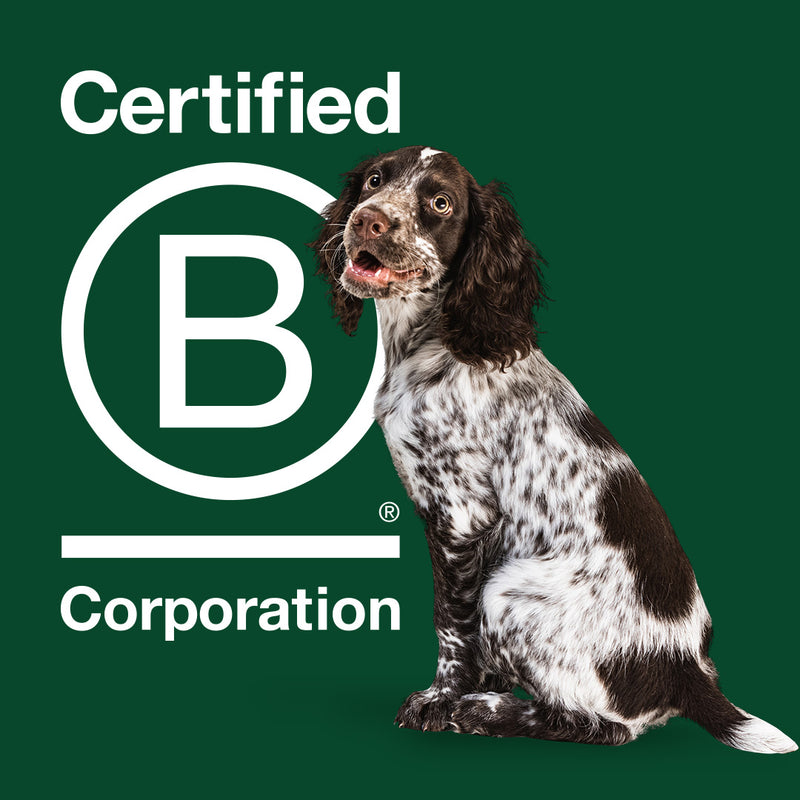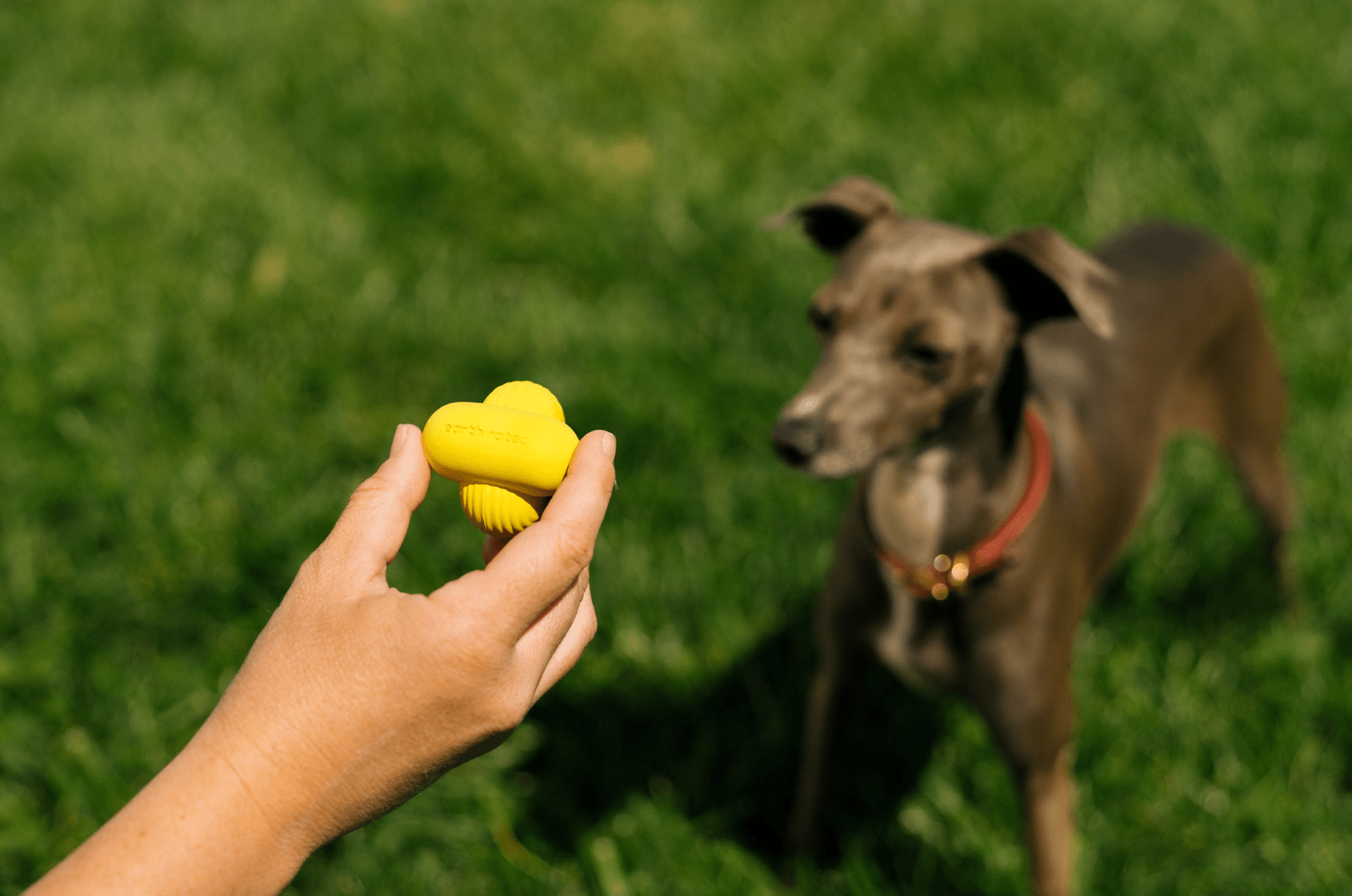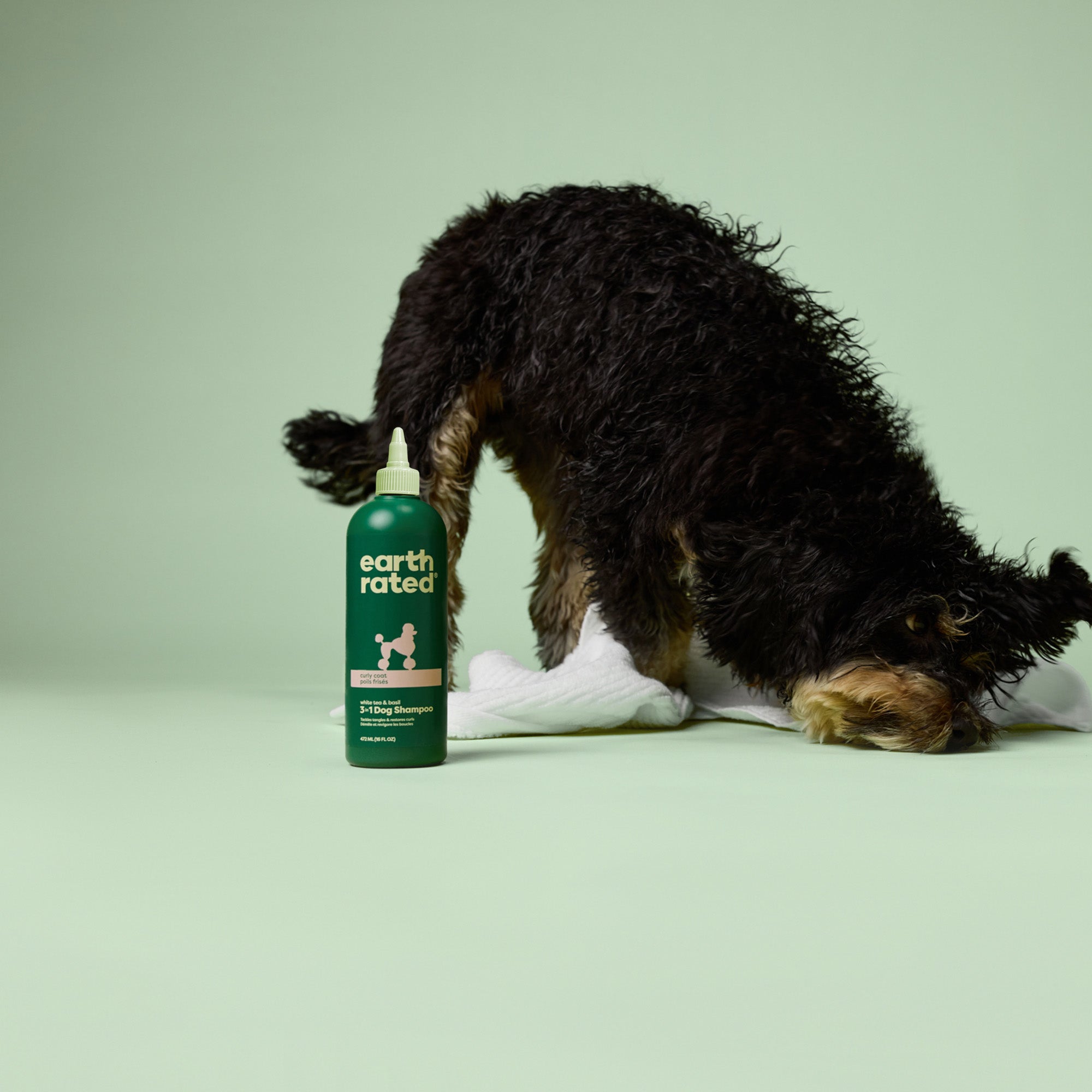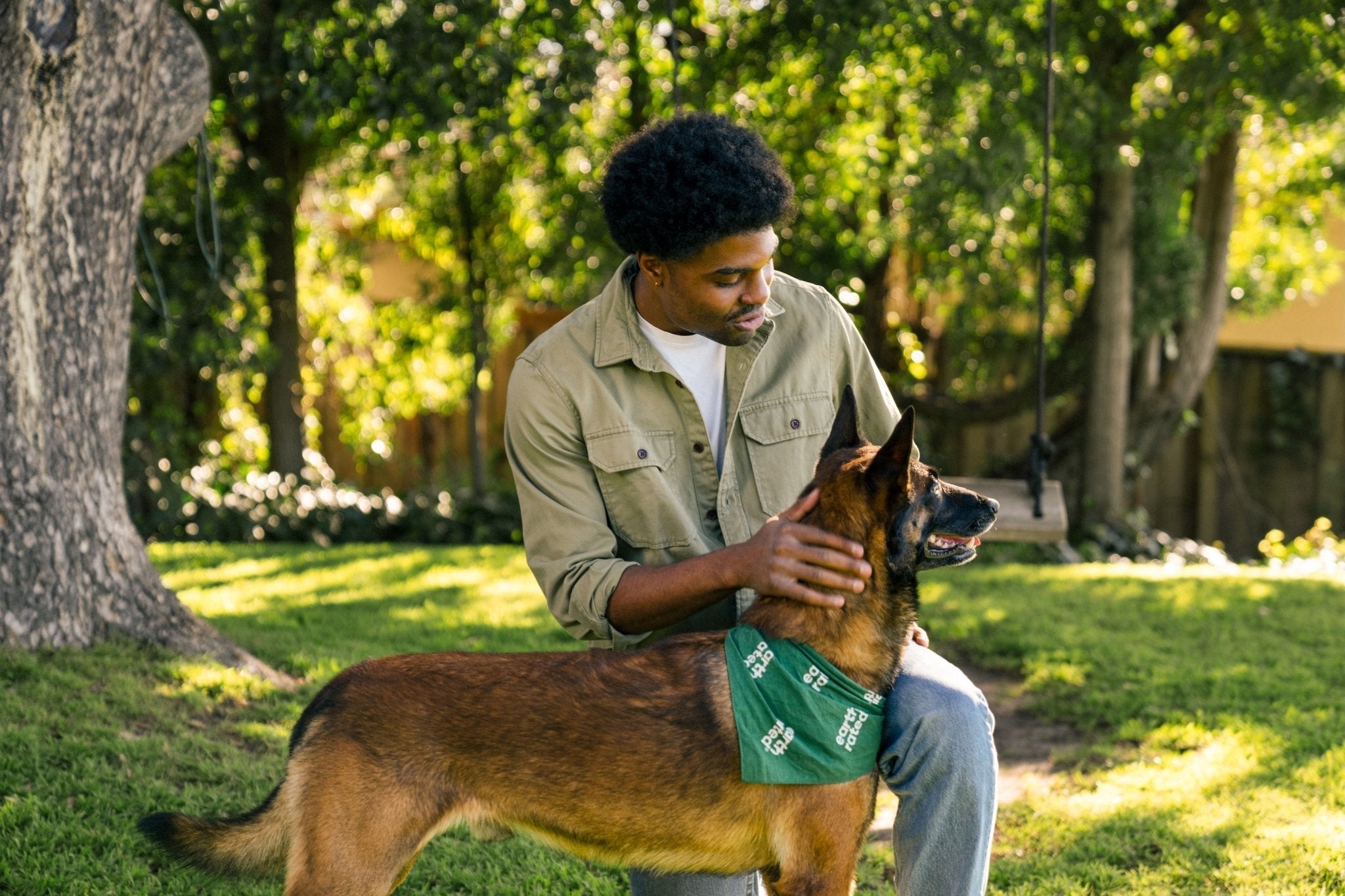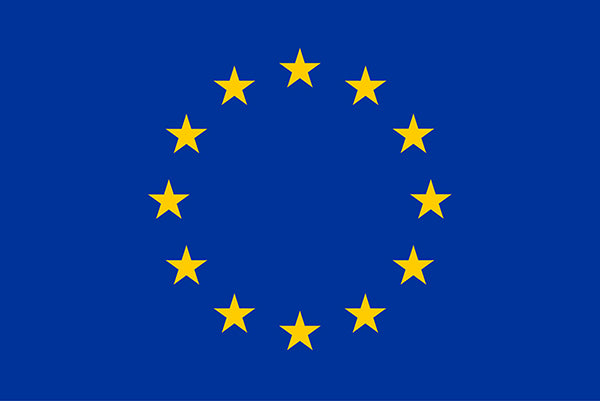Avez-vous déjà lancé une balle rouge vif dans un parc et votre chien l'a perdue dans l'herbe verte ? Si c'est le cas, vous vous demandez peut-être quelles couleurs voient réellement les chiens ?
Pendant des décennies, personne ne le savait vraiment. Heureusement, la science a fait des progrès et peut maintenant apporter un peu de lumière sur ce sujet. Myriam Doré, technicienne en santé animale, explique que les chiens ne voient pas toutes les couleurs que les humains, mais leur monde n’est pas non plus entièrement noir et blanc !
Dans cet article, nous examinerons de plus près la vision canine, explorerons les couleurs que les chiens peuvent voir et fournirons des conseils pratiques pour renforcer votre lien avec votre chien.
La science derrière la vision canine
Les humains et les chiens ont une structure oculaire similaire. La vision repose sur deux cellules principales de l'œil appelées bâtonnets et cônes.
Les bâtonnets détectent la lumière. Ils peuvent voir les formes et le mouvement, mais ils ne détectent pas les couleurs. C'est juste une sorte de système marche/arrêt. Les cônes, en revanche, peuvent détecter un large spectre de couleurs.
« Nous, les humains, avons trois types de cônes qui nous permettent de reconnaître des combinaisons de rouge, de bleu et de vert », explique Myriam. « Les chiens, eux, ne possèdent que deux types de cônes et ne peuvent détecter complètement que le bleu et le jaune. »
Ce type de vision est appelé dichromatique , ce qui signifie « deux couleurs ». En termes simples, les chiens voient principalement les nuances de bleu et de jaune , ainsi que l’ensemble du spectre des gris. Ils ne voient pas les rouges et les oranges.
Cela est probablement dû au rôle ancestral des chiens. Les humains sont principalement actifs pendant la journée, mais de nombreux loups anciens étaient crépusculaires, ce qui signifie qu'ils étaient plus actifs à l'aube et au crépuscule. (C'est le rythme de sommeil que suivent la plupart des animaux prédateurs.)
Les cônes des chiens ne fonctionnent pas aussi bien parce qu'ils ne sont pas actifs pendant la majeure partie de la journée. En conséquence, ils ont développé une vision nocturne supérieure et la capacité de voir une large gamme de couleurs. En fait, ils voient dans le noir bien mieux que les humains. Ils peuvent également détecter des niveaux de lumière plus élevés mieux que les humains.
De plus, l'odorat d'un chien est très développé et joue probablement un rôle plus important dans la chasse et les interactions sociales, ce qui élimine le besoin d'une vision des couleurs très développée.
Comprendre les couleurs que voient les chiens
Contrairement à notre monde vibrant de soleil, de papillons et d'arcs-en-ciel, l'expérience visuelle d'un chien est beaucoup plus atténuée et aux tons plus froids. Ils ne peuvent pas apprécier les teintes ardentes d'un coucher de soleil, mais ils ont une certaine capacité à voir les bleus et les jaunes.
Ils ne peuvent pas voir les rouges, ce qui signifie également qu’ils ne peuvent pas voir les couleurs composées de rouge, comme l’orange et le violet.
Cette vision limitée des couleurs peut influencer le comportement de votre chien de manière surprenante. Selon Myriam, si « vous lancez un jouet rouge, rose ou orange, il peut être difficile pour le chien de le repérer dans l’herbe ».
C'est pour cette raison que Earth Rated a veillé à ce que ses jouets en mouvement, comme ce jouet à rapporter, soient d'un jaune vif afin que votre chien puisse le voir plus facilement lorsqu'il joue à l'extérieur ! Découvrez cette évaluation du jouet à rapporter Earth Rated ici : Analyse d'un expert .

Démystifier les mythes sur la vision canine
Levez la patte si vous avez déjà cru au mythe selon lequel les chiens voient le monde comme un film ennuyeux en noir et blanc. Ici aussi, levez la patte coupable ! C'est ce que la science pensait jusqu'à il y a seulement quelques décennies !
Il est temps de se débarrasser de cette idée fausse. Si les chiens ne voient pas en Technicolor comme nous, leur monde n'est pas non plus un film monotone en noir et blanc. Ils voient juste les choses un peu différemment .
Par exemple, au lieu de voir un frisbee violet vif siffler dans les airs, ils pourraient voir une image floue brun-gris atténuée. Pas très excitant, mais toujours pas en noir et blanc !
Comme nous l'avons déjà évoqué, les chiens n'ont que deux types de cônes, alors que les humains en ont trois. Cela signifie qu'ils voient le monde en grande partie dominé par des nuances de bleu et de jaune, ainsi que par un spectre de gris.
Alors, la prochaine fois que vous choisirez un nouveau jouet stimulant pour chien , vous voudrez probablement vous tourner vers les jaunes et les bleus !

Au-delà des bleus et des jaunes
Nous avons établi que les chiens voient principalement dans les tons bleus et jaunes, mais ils peuvent aussi voir légèrement dans d'autres couleurs. Par exemple, les chiens peuvent voir dans un rouge brunâtre. Ce n'est pas un rouge vif comme nous, mais une couleur brune trouble, pas grise !
Ces petites variations semblent exister, mais il semble que les experts tentent toujours de comprendre dans quelle mesure les chiens peuvent voir d'autres couleurs. On pense que les chiens voient le vert comme une couleur plus jaunâtre.
Les chiens voient également la lumière ultraviolette (UV) , ce que les humains ne peuvent pas voir ! Ce type particulier de lumière n'est pas visible naturellement pour nous, mais de nombreuses espèces animales la voient. Par exemple, les oiseaux peuvent également voir la lumière UV. Certains oiseaux nous semblent banals, mais ils peuvent en fait être très colorés sous l'effet des UV ! Nos chiens peuvent voir ces couleurs UV, ce qui rend leur monde un peu plus coloré.
Nos chiens peuvent même détecter des choses comme des marques d'urine par la vue, grâce à leurs récepteurs UV.
Cela dit, il est important de se rappeler que la recherche sur la lumière UV en est encore à ses débuts. Nous ne savons pas exactement quelle quantité de lumière UV les chiens peuvent voir. Encore une fois, étudier ce que nous ne pouvons pas voir nous-mêmes est difficile.
Les chiens peuvent-ils voir dans le noir ?
Les chiens voient mieux que les humains dans des conditions de faible luminosité. Mais nous ne savons pas exactement dans quelle mesure ils voient mieux.
Leur capacité à voir dans le noir est en grande partie due à leur concentration plus élevée de bâtonnets que de cônes. Les bâtonnets excellent dans la détection des mouvements et des formes dans des conditions de faible luminosité, mais ils ne détectent pas les couleurs. Les chiens ont une concentration de bâtonnets beaucoup plus élevée que celle des cônes.
Cette différence les aide à mieux voir dans le noir, mais elle les rend également moins capables de distinguer les couleurs. C'est un sacrifice qui a été fait à un moment donné au cours de leur évolution.
Considérations pratiques pour les propriétaires de chiens
C'est génial, les chiens peuvent voir le jaune et le bleu, mais pourquoi est-ce important pour vous et votre chien ?
Cela peut modifier quelque peu leur comportement. Voici quelques situations dans lesquelles vous devez garder à l'esprit la capacité de votre chien à voir les couleurs :
Même si cela peut sembler être un détail de prendre en compte les couleurs que votre chien peut voir, cela peut rendre le jeu plus agréable et l'entraînement plus facile. En intégrant ces conseils colorés dans votre routine quotidienne, vous pouvez rendre le monde de votre chien un peu plus lumineux (enfin, plus bleu et plus jaune) !

Alors, voilà !
Le mystère de la vision canine est dévoilé. Même si votre chien n'apprécie peut-être pas les beaux-arts comme vous, il perçoit le monde en bleu, jaune et beaucoup de gris. Et c'est normal !
Comprendre exactement comment votre chien perçoit ces couleurs vous permet de lui faciliter la vie. Vous pouvez choisir des jouets bleus et jaunes, qui lui permettront de jouer plus facilement à des jeux de lancer/rapporter. Vous pouvez également sélectionner des aides à l'entraînement bleues ou jaunes que votre chien peut voir clairement au lieu de jouets orange et rouges qu'il a peut-être du mal à voir !
Pensez à regarder votre maison à travers les yeux de votre chien, surtout en ce qui concerne ses affaires ! Un lit bleu ou jaune fera beaucoup plus de bruit à votre chiot qu'un lit violet ou orange.
Voyez la différence dans le jeu lorsque votre chiot interagit avec des jouets qu’il peut voir !
Acheter des jouets pour chiens
FAQ
Quelles couleurs les chiens voient-ils le mieux ?
Les chiens voient mieux le bleu et le jaune. Leur vision est dichromatique, c'est-à-dire bicolore. En plus de voir le bleu et le jaune, les chiens peuvent également voir tout le spectre des gris. Les chiens voient moins bien le rouge, ils ne peuvent pas non plus voir les couleurs composées de rouge, comme l'orange et le violet.
Quelles couleurs attirent le plus les chiens ?
Les couleurs bleu et jaune sont les plus attractives pour les chiens car elles ressortent le plus. Ces deux couleurs sont les plus visibles dans la vision d'un chien, donc les objets avec ces couleurs attireront le plus d'attention.



